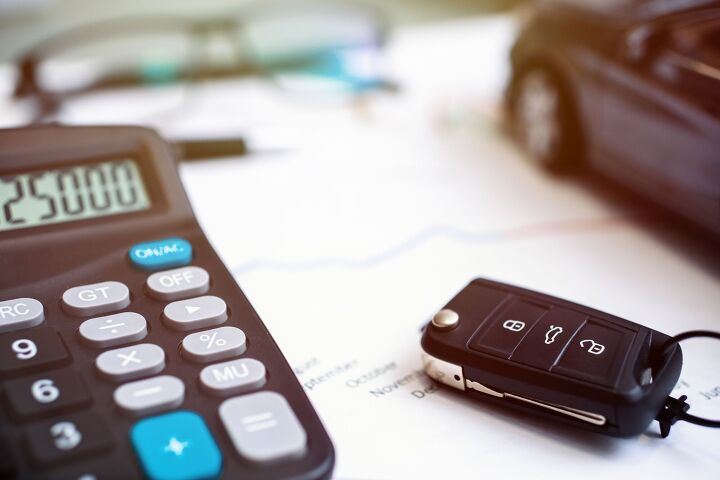That’s Grand: Record Numbers of Car Payments Exceed $1,000/mo

If you’re thinking that an ever-climbing percentage of the average household income is being allocated toward car debt – you’re exactly right. According to third-party industry watchers, the number of notes with a monthly payment of $1,000 or more has risen to record heights.
How many? A notable 15.7 percent of new vehicle customers signed on the dotted line for four-figure payments in the fourth quarter of 2022, according to Edmunds. That’s compared to 10.5 percent during the same timeframe in 2021 and just 6.7 percent in 2020. Frankly, that’s a terrifying jump. And it’s not just new cars. Edmunds estimates 5.4 percent of consumers who financed a used vehicle in the last quarter of 2022 committed to a $1,000+ monthly payment, also a record high, compared to 3.9 percent in Q4 2021 and 1.5 percent in Q4 2020.
Paradoxically, consumers are apparently making bigger down payments than ever before. Edmunds says the average down payment for new and used vehicles hit record highs in the last quarter of 2022, climbing to $6,780 and $3,921, respectively.
So what’s driving the increase? Multiple factors, it seems. New and used car prices remain high, of course, despite cooling off in recent weeks. CNBC reports the average price paid for a new car in December set a record of $46,382, according to a separate estimate from J.D. Power. Interest rates are also quite high compared to just one year ago, which doesn’t help matters, with Edmunds pegging the average APR last quarter at 6.5 percent on new and a face-shattering 10 percent on used.
And there are apparently still a host of people dense enough to roll in significant amounts of negative equity into their new loans. Again, from Edmunds: 17.4 percent of new vehicle sales with a trade-in had negative equity in Q4 2022, up 2.5 percent from one year prior, with the average amount owed on in-the-ditch loans was $5,341 in Q4 2022 compared to $4,141 in Q4 2021. Here's a quirk, though – 31.5 percent of loans had negative equity in Q4 2020, though the average amount was $5,059 in that same quarter which is ever so slightly less than in 2022.
We can only guess what the amounts of negative equity will be in Q4 2023 and Q4 2024 when buyers who purchased vehicles at inflated values over the last couple of years begin to try and trade their rides. Additional dealer markup, a common practice by some greedy dealerships in the last 24 months, will assuredly drive negative equity even higher in the months and years to come.
One other wrench in the works? Edmunds also reports that an increasing number of luxury car shoppers are choosing to buy instead of lease, falling to 26 percent of transactions from well over 50 percent in 2019. Extra six-figure vehicles are suddenly included in the mix will surely skew the data.
[Image: osonmez2/Shutterstock.com]
Become a TTAC insider. Get the latest news, features, TTAC takes, and everything else that gets to the truth about cars first by subscribing to our newsletter.

Matthew buys, sells, fixes, & races cars. As a human index of auto & auction knowledge, he is fond of making money and offering loud opinions.
More by Matthew Guy
Latest Car Reviews
Read moreLatest Product Reviews
Read moreRecent Comments
- Master Baiter I thought we wanted high oil prices to reduce consumption, to save the planet from climate change. Make up your minds, Democrats.
- Teddyc73 Oh look dull grey with black wheels. How original.
- Teddyc73 "Matte paint looks good on this car." No it doesn't. It doesn't look good on any car. From the Nissan Versa I rented all the up to this monstrosity. This paint trend needs to die before out roads are awash with grey vehicles with black wheels. Why are people such lemmings lacking in individuality? Come on people, embrace color.
- Flashindapan Will I miss the Malibu, no. Will I miss one less midsize sedan that’s comfortable, reliable and reasonably priced, yes.
- Theflyersfan I used to love the 7-series. One of those aspirational luxury cars. And then I parked right next to one of the new ones just over the weekend. And that love went away. Honestly, if this is what the Chinese market thinks is luxury, let them have it. Because, and I'll be reserved here, this is one butt-ugly, mutha f'n, unholy trainwreck of a design. There has to be an excellent car under all of the grotesque and overdone bodywork. What were they thinking? Luxury is a feeling. It's the soft leather seats. It's the solid door thunk. It's groundbreaking engineering (that hopefully holds up.) It's a presence that oozes "I have arrived," not screaming "LOOK AT ME EVERYONE!!!" The latter is the yahoo who just won $1,000,000 off of a scratch-off and blows it on extra chrome and a dozen light bars on a new F150. It isn't six feet of screens, a dozen suspension settings that don't feel right, and no steering feel. It also isn't a design that is going to be so dated looking in five years that no one is going to want to touch it. Didn't BMW learn anything from the Bangle-butt backlash of 2002?


































Comments
Join the conversation
What's crazy to me is that wheeling and dealing with negative equity is still a thing, especially since valuations only recently began declining.
As I sit in traffic surrounded by pickups I know are exceeding 70k in cost, I'm not the least surprised.